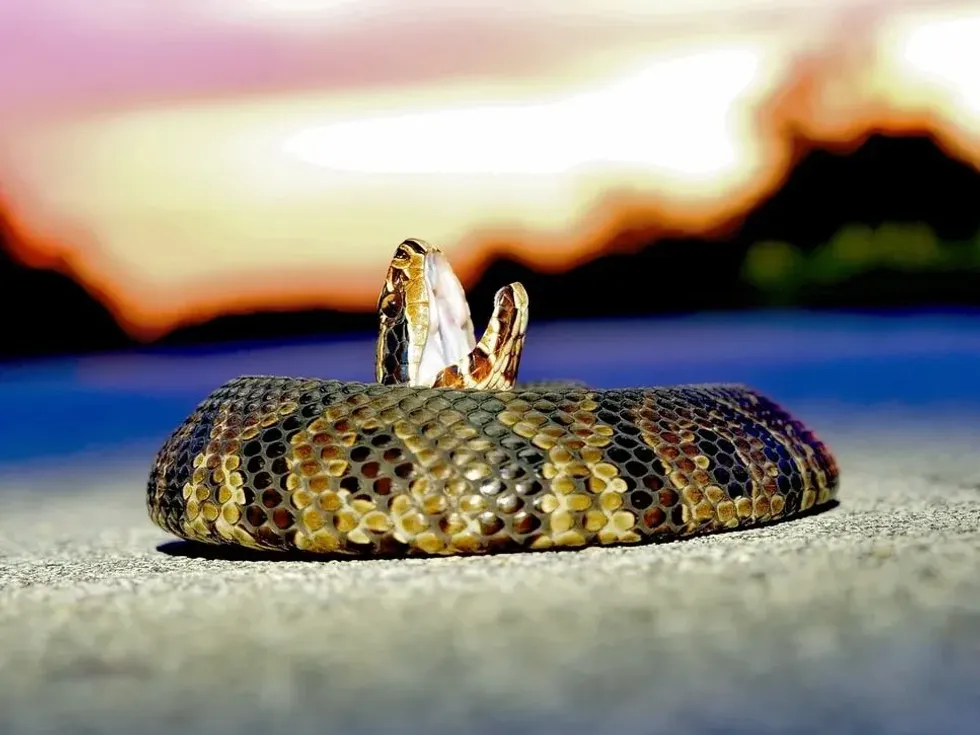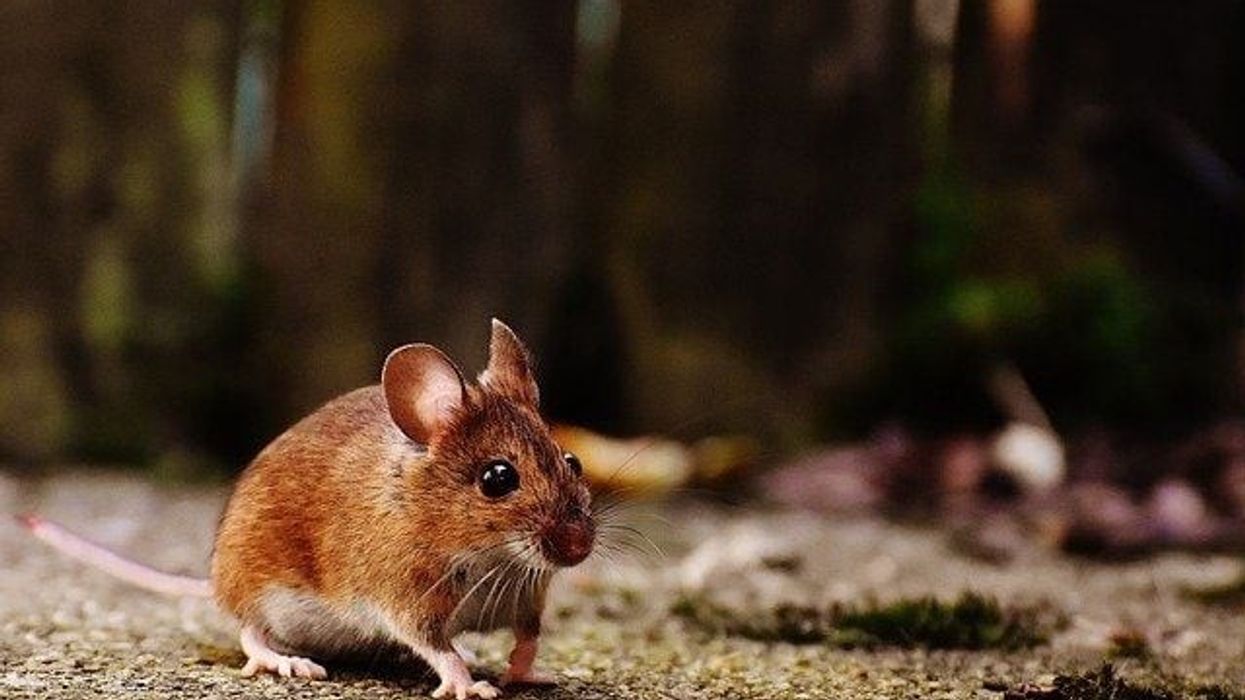Snakes are beautiful and magnificent creatures on earth which look exciting but are scary. Snakes are one of the most alert and dangerous species in the world.
There are many species of snakes, and one such species is known as cottonmouth. A cottonmouth snake is a snake found in the swamps, ponds, lakes, and marshes of the United States.
In this article, we have gathered some really interesting facts about cottonmouth snakes, which will help us learn about this beautiful snake in detail. Do you know that a cottonmouth Snake is a lot similar to a copperhead snake?
A cottonmouth and copperhead are often mistaken to be the same. However, these snakes can be termed as similar but not the same. They are similar because both of these snakes belong to the same genus Agkistrodon.
Both of these breeds are known to breed together and form hybrid snakes. These two species are very close to each other, and that's why it is possible for them to produce hybrids. Interesting!
Isn’t it? This species of snakes have a lot of interesting, fun facts. So, without wasting any time, let's begin with the cottonmouth fun facts.
Cottonmouth Snake Interesting Facts
What type of animal is a cottonmouth snake?
A cottonmouth (Agkistrodon piscivorus), also known as cottonmouth snake water moccasin, is a venomous snake. There are various species of these snakes including the Florida cottonmouth snake, eastern cottonmouth snake, and western cottonmouth snake.
The water moccasin uses the tail tips to lure the prey within striking distance and then with one smooth vicious snap catches the prey in its mouth. Unlike other water snakes, they also vibrate their tail to attract the prey closer.
What class of animal does a cottonmouth snake belong to?
A cottonmouth snake belongs to the reptilia class of animals. This is the only venomous snake in the North America but is amongst the most lethal venomous snakes in the world. Florida cottonmouth snake is often mistaken for other non-venomous water snakes. It is counted amongst the most dangerous water snakes whose bite will require immediate medical attention.
How many cottonmouth snakes are there in the world?
The cottonmouths’ snakes are common in the United States, and their population can be in the thousands. The information regarding the exact number of their population is not known. The cottonmouth snakes are categorized as pit vipers due to the presence of facial pits.
Where does a cottonmouth snake live?
The habitat of a Florida cottonmouth snake is located in the southeastern regions of the United States, starting from southern Virginia to Florida and to eastern Texas. The eastern cottonmouth habitat is located in Virginia, North and South Carolina, Georgia, Florida, and Alabama.
What is a cottonmouth snake's habitat?
Florida cottonmouth snakes live in swamps, marshes, drainage ditches, edges of ponds, lakes, and streams.
Who do cottonmouth snakes live with?
Cottonmouth snakes live alone and do not like to be disturbed. Cottonmouth snake bite is extremely lethal but it bites humans only if it perceives any serious threats.
How long does a cottonmouth snake live?
The average lifespan of a cottonmouth snake is 10 years.
How do they reproduce?
Cottonmouth snakes breed during the spring and autumn season. As the juvenile cottonmouth snake grows and develops, the eggs stay within the mother's body.
As soon as the development is complete, the eggs are laid when they are about to hatch. The gestation period of a Cottonmouth snake is three months. It can give birth to 10-20 live young cottonmouth snakes once every three years.
Like other pit vipers, water moccasins do not lay eggs. Much like pit vipers, these eggs are stored inside the body of the female till the time they are ready to 'hatch' after which the females give birth to live young.
What is their conservation status?
The population of cottonmouth snakes is stable and their conservation status is of Least Concern.
Cottonmouth Snake Fun Facts
What do cottonmouth snakes look like?
Cottonmouth snakes are semi-aquatic snakes which are also known as water moccasins. Cottonmouth snake head comprises oval-shaped pupils, large jowls (because of the presence of Venom glands), and is triangular shaped.
The color of their skin can be olive green with a mix of yellow, dark brown, or black. Cottonmouth snake belly is paler in appearance as compared to their back. They have a bright yellow tail tip which is used to attract the prey closer to the western cottonmouth snake.
How cute are they?
Snakes aren't cute creatures, but they are beautiful semi-aquatic predators. The cottonmouth snake eyes are magnificent and shiny, which makes their appearance a lot fascinating.
How do they communicate?
Generally, all snakes communicate with the help of pheromones. Pheromones are basically chemical signals which are given by their glands, and these signals are picked up by the vomeronasal organ. These pheromones convey to other snakes the key information, like age, sex, and willingness to mate.
How big is a cottonmouth snake?
Some cottonmouth snakes can grow up to 70 in, but the average length of these snakes is between 30-40 in, which means that a cottonmouth snake is four times bigger than a Schneider snake.
How fast can a cottonmouth snake move?
A cottonmouth snake can move at an impressive speed of 2.42 meters per second.
How much does a cottonmouth snake weigh?
A male cottonmouth snake weighs 0.64-1.28 lb, and a female cottonmouth snake weighs 0.44-0.60 lb.
What are their male and female names of the species?
There is no distinct name allotted to their male and female species of these water snakes. They are simply referred to as male cottonmouth snake and female cottonmouth snake.
What would you call a baby cottonmouth snake?
The baby cottonmouth snakes can be called juvenile cottonmouths. The very newly born snakes are also referred to as neonates, and newly hatched snakes as hatchlings.
What do they eat?
Cottonmouth snakes prey on fish, small mammals, turtles, and insects.
Are they poisonous?
Yes, cottonmouth snakes are venomous snakes unlike other water snakes who are non-venomous. The poison of these venomous snakes can be really harmful but it rarely results in the death of any person.
Would they make a good pet?
Snakes are not at all suitable for pet life. Snakes can be dangerous as they are aggressive and venomous. But if you are an expert in handling such reptiles then they might be a good pet for you. But it is advisable to adopt a non-venomous species as compared to venomous snakes.
Did you know...
The bite of cottonmouth can be painful. However, the signs or symptoms of the bite might appear much later (usually after hours).
The symptoms can be striking pain. Swelling, skin gets discolored, difficulty in breathing or heavy breathing. The bite of cottonmouth is indeed painful and fatal, but it can be treated, and the death ratio by a cottonmouth's bite is extremely low.
In the winter season, the water moccasins or cottonmouth go to the north side, where they hibernate during this season. For hibernation, the water moccasins live in rocky wooded hillsides, burrows of crayfish, tortoises, or other such mammals, under rotting stumps and other covers along with juvenile cottonmouths.
The biggest cottonmouth snake was 74 inches long and was an Eastern Cottonmouth. This snake was found in the swamp near the Virginia and North Carolina border. This snake was given to the Philadelphia Zoo. This snake died very soon from the injuries.
Yes, they can swim. A cottonmouth snake is a semi-aquatic snake that can swim or rather float easily. The body of Cottonmouth floats, and they keep their head out of the water. Cottonmouths are generally found near lakes, rivers, ponds, and swamps.
No, the cottonmouths snakes are not endangered. The population of these snakes is stable, and they do not face any threat of being endangered in the future as well.
What are some other names for a cottonmouth snake?
Some common names for a cottonmouth snake are Agkistrodon piscivorus, water moccasin, aquatic moccasin, black moccasin, black snake, blackwater viper, blunt-tail moccasin, cotton-mouthed snake, cottonmouth rattler, cottonmouth water moccasin.
Where does the name cottonmouth snake come from?
A cottonmouth snake gets its name as cottonmouth because the inside mouth of this snake is fluffy and white in color.
Here at Kidadl, we have carefully created lots of interesting family-friendly animal facts for everyone to discover! You can even occupy yourself at home by drawing one on our cottonmouth snake coloring pages.









